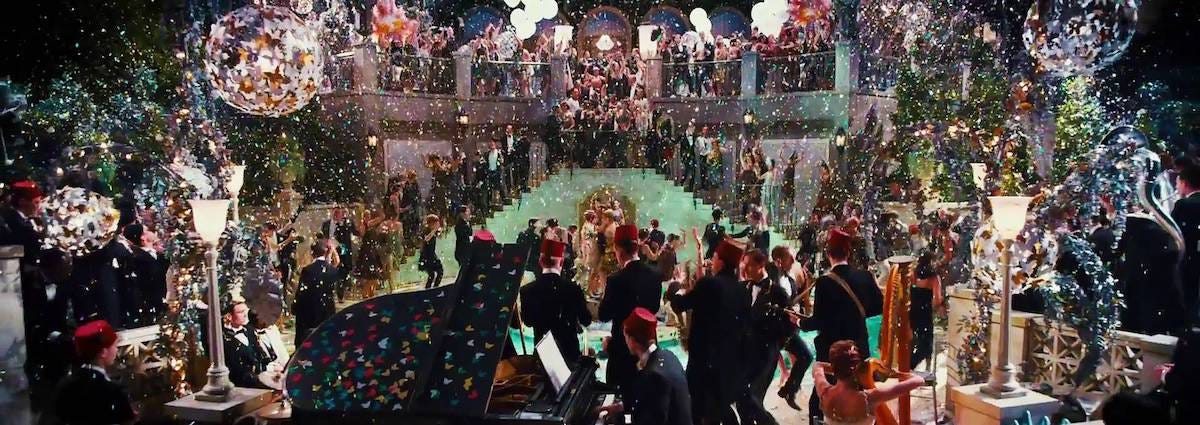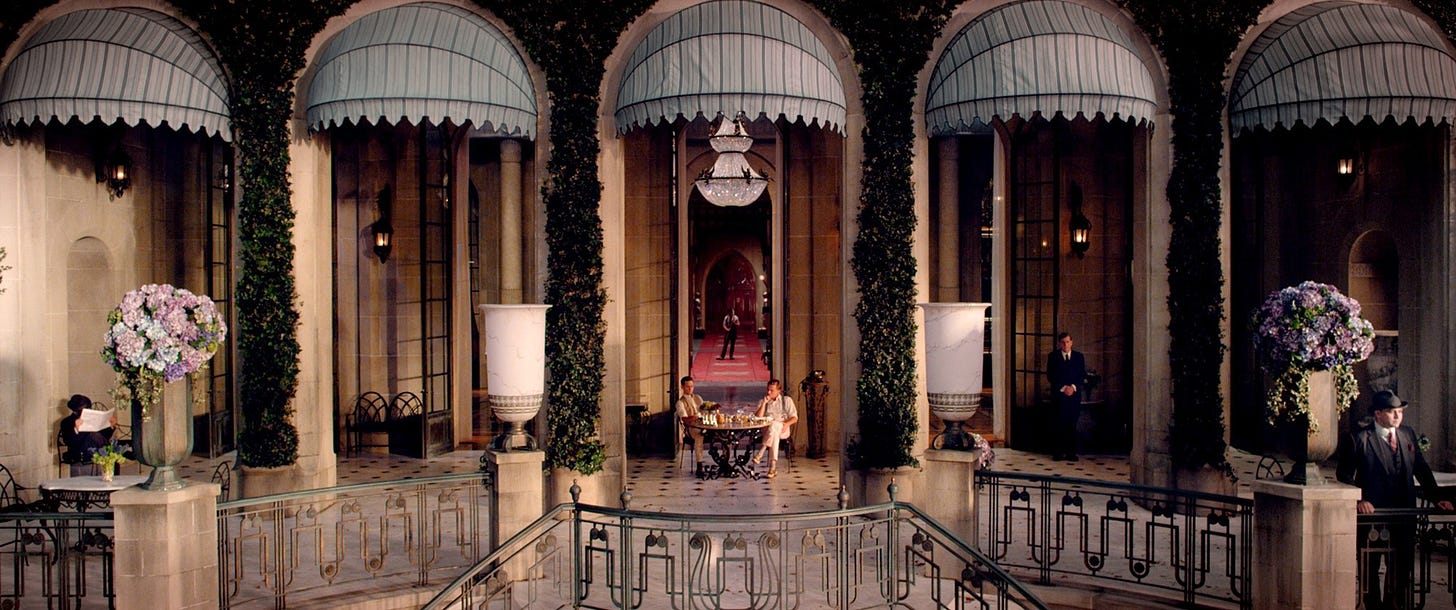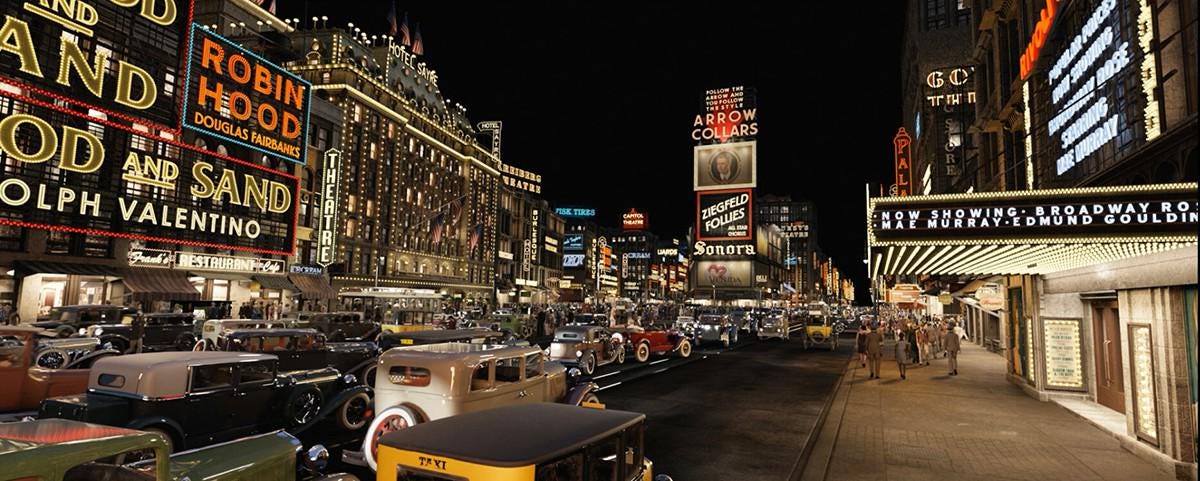The Great Gatsby (2013): The Tragedy of the American Dream
The Great Gatsby tells the story of a tragic romance, but it also deeply portrays the corruption of the American Dream.
The aftermath of World War One saw America flourishing in all spheres of development. People of the country were driven towards achieving success in life, compelled by their desire for wealth and status. This quest for materialism took control of the nation, and individuals began to identify themselves based on their social position and the recognition they received.
The Great Gatsby is a novel written by F. Scott Fitzgerald that captures the essence of American society at that time. It was later adapted into a movie by director Baz Luhrmann, bringing the timeless tale to a wider audience.
The timeless classic showcases how societal constructs define human behaviour and offer a commentary on the nature of the American Dream.

The Great Gatsby as a Tragedy
The Great Gatsby explores the theme of the American Dream and its disillusionment. It takes us on a journey through the roaring 20s and introduces us to the glamorous world of the New York elite.
However, beneath the glittering surface, we discover a society obsessed with wealth, status, and power. In this world, money reigns supreme, and individuals are willing to do whatever it takes to achieve their dreams. Like moths, the characters in the novel are lured by the elite lifestyle, only to find themselves drowning in excess and corruption.
At the center of this world is Jay Gatsby, a mysterious and charismatic figure, who has achieved wealth and success beyond imagination. However, his life is overshadowed by his love for Daisy Buchanan, a woman he met and fell in love with before the war. Daisy, unfortunately, is now married.

Gatsby's story perfectly fits the metaphor of the moth to the flame. He is drawn to his dream of winning back Daisy, who represents everything he desires. She is the flame that he cannot resist, despite knowing that it will ultimately lead to his downfall. Gatsby becomes so consumed by his dream that he is willing to do whatever it takes to achieve it, including lying, cheating, and distancing himself from his roots.
The concept of illusion and reality is illustrated throughout the story. Gatsby has created an illusion of himself as a wealthy and successful man, but his life is full of lies and deceit. His dream of winning back Daisy's heart is an illusion, and he is unable to recognize the reality of their separation. Gatsby, eventually, becomes a prisoner of his dreams.
The story explores the idea of the American Dream, the belief that anyone, regardless of their origins, can achieve success and prosperity through hard work and determination. Gatsby embodies this ideal, having risen from humble beginnings to become wealthy and successful.
There are many thoughts on this matter, that the American society of that time—a society full of ambition, where status and wealth were the keys to happiness—is responsible for Gatsby's failure in realizing how delusional his goals and dreams are. This is a testament to the famous saying, "Man proposes, God disposes."
However, some argue that Gatsby willingly grasps his dream rather than facing reality, causing him to stray and dive into his past. The novel itself seems to lean towards this assumption when it describes Gatsby's death:
“He must have felt that he had lost the old warm world, paid a high price for living too long with a single dream.”

Art Deco as a Reflection of the Societal Changes
Alongside its captivating storyline, The Great Gatsby stands out for its Art Deco-inspired set design, which exudes the style's prominent presence from the 1920s and 1930s. Art Deco is not only a character in the novel, but also a valuable storytelling element.
Art Deco emerged in the 1920s following the First World War. While movements such as Arts & Crafts, Art Nouveau, and Bauhaus embodied fluidity or minimalism, Art Deco went in the opposite direction of its predecessors.
Art Deco didn't celebrate the talent of artists or nature. Instead, it delivered a powerful blow to what was considered "vulnerable" and "delicate," as it exalted modern and robust trends. This style brought a fresh perspective to art and design with geometric shapes, minimalistic colours, and the use of contemporary materials like glass, steel, and chrome.
It was inspired by the rapid technological advancements of the time and was characterized by geometric shapes, bold lines, and bright colours. Art Deco signified progress and modernity and was embraced by a society that was breaking free from the constraints of the past. And The Great Gatsby, set in that era, portrays a society that was redefining itself and breaking free from tradition.
Jay Gatsby, the central character, is known for his lavish parties that are attended by the elite of New York society. The parties are described as being extravagant, with guests dressed in elegant attire, dancing and drinking, and enjoying the luxuries of the time. The atmosphere of the parties is a reflection of the Art Deco style, with bold, geometric designs, and bright colors.
These fashion trends were a reflection of the societal changes taking place, with women breaking free from the constraints of traditional fashion. The novel reflects these changes, with the female characters wearing beautiful dresses that are a reflection of the Art Deco.
The Art Deco style was also a reflection of the economic changes taking place during the 1920s. The era was characterized by a boom in the economy, with people enjoying newfound wealth and prosperity.
The novel reflects this change through the description of Gatsby's extravagant mansion. The house is described as being a symbol of wealth and luxury, with its beautiful Art Deco design and opulent furnishings. The mansion perfectly encapsulates the societal changes of the time, with people enjoying newfound wealth and prosperity in their brand-new suits.
However, the opulence and extravagance of the Art Deco style were not without their downsides. The societal changes taking place during the 1920s were also characterized by corruption, moral decay, and the collapse of traditional values. The Great Gatsby recalls these changes by portraying the characters as being consumed by their desire for wealth and status, chasing after their dreams without regard for others.

End
The Great Gatsby is a plentiful and glamorous story that embodies Art Deco elements into the narrative to create a sense of luxury, sophistication, and modernity. This style not only enhances the beauty of the story but also serves as a reflection of the rapidly changing society of the time.
The Great Gatsby dives into human nature and the complexity of identity. The characters are eager to attain wealth and status, hoping to find happiness and fulfilment in their material possessions.
However, their pursuit of the American Dream ultimately leads them to confront the harsh reality that true happiness and fulfilment cannot be bought. In a world where wealth and status are everything, love becomes a precious and elusive commodity, and the desire for it often leads to heartbreak and despair.
The portrayal of wealth in The Great Gatsby also highlights the emptiness that can come with it. The story reveals how material possessions can become a prison for its owner, isolating them from the world and the people around them.
In conclusion, while Art Deco serves to emphasise the setting and atmosphere of The Great Gatsby, the story is ultimately a tragic tale about the limitations of wealth and the pursuit of the American Dream.






